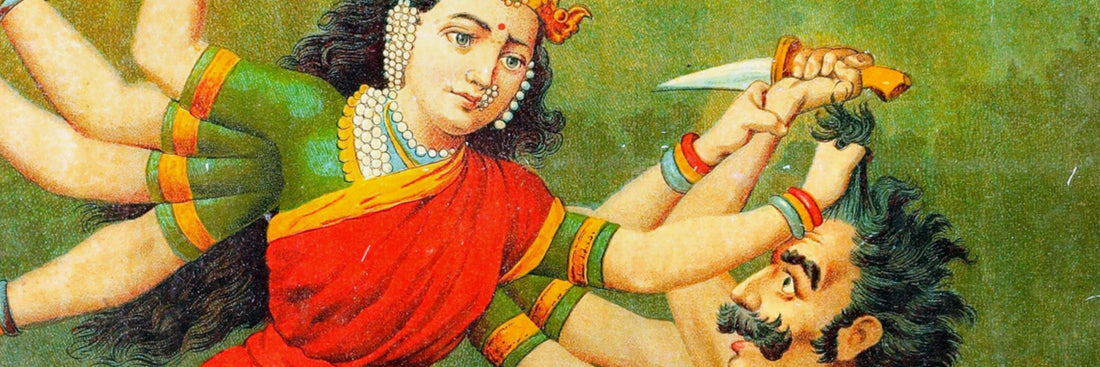
Ravi Varma: The Pioneer of Modern Indian Art
Share
Ravi Varma (1848-1906) is one of India’s most celebrated painters, known for blending traditional Indian themes with European artistic techniques. His work remains a cornerstone of Indian art, influencing generations of artists and redefining the portrayal of Indian mythology and culture.
A Visionary Artist Bridging Cultures
Born in Kilimanoor, Kerala, Ravi Varma showed artistic talent from a young age. He mastered oil painting, a Western medium, and applied European techniques such as perspective, chiaroscuro, and naturalistic detailing to depict Indian subjects. His ability to merge these styles created a unique visual language that appealed to both Indian and Western audiences.
Mythology Comes to Life
Ravi Varma is best known for his depictions of Hindu gods, goddesses, and epic scenes from the Ramayana and Mahabharata. His paintings made divine figures more accessible and relatable, portraying them with human emotions and grace. Some of his most famous works include Shakuntala Looking for Dushyanta, The Maharaja of Travancore, and Damayanti and the Swan.
Revolutionizing Indian Art Through Lithography
A key aspect of Varma’s legacy is his role in democratizing art. He established a lithographic press in Mumbai, which allowed mass reproduction of his paintings. His prints of gods and goddesses became household icons, reaching a vast audience and making religious art affordable to the common people. This revolutionized visual culture in India, setting the foundation for modern popular imagery.
Legacy and Influence
Despite facing criticism for Europeanizing Indian art, Ravi Varma’s influence remains unparalleled. He paved the way for a new artistic movement that combined tradition with innovation. His contributions to Indian art and culture continue to inspire artists, and his works are preserved in museums and private collections worldwide.
Ravi Varma’s art is not just about aesthetics—it represents a cultural shift that bridged the ancient with the modern. His paintings continue to captivate art lovers, making him an eternal icon in India’s artistic heritage.
